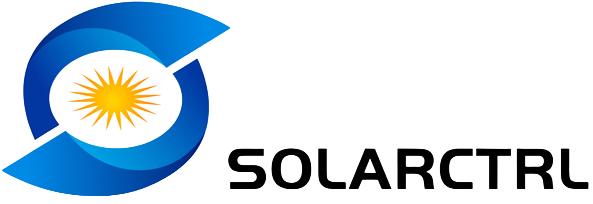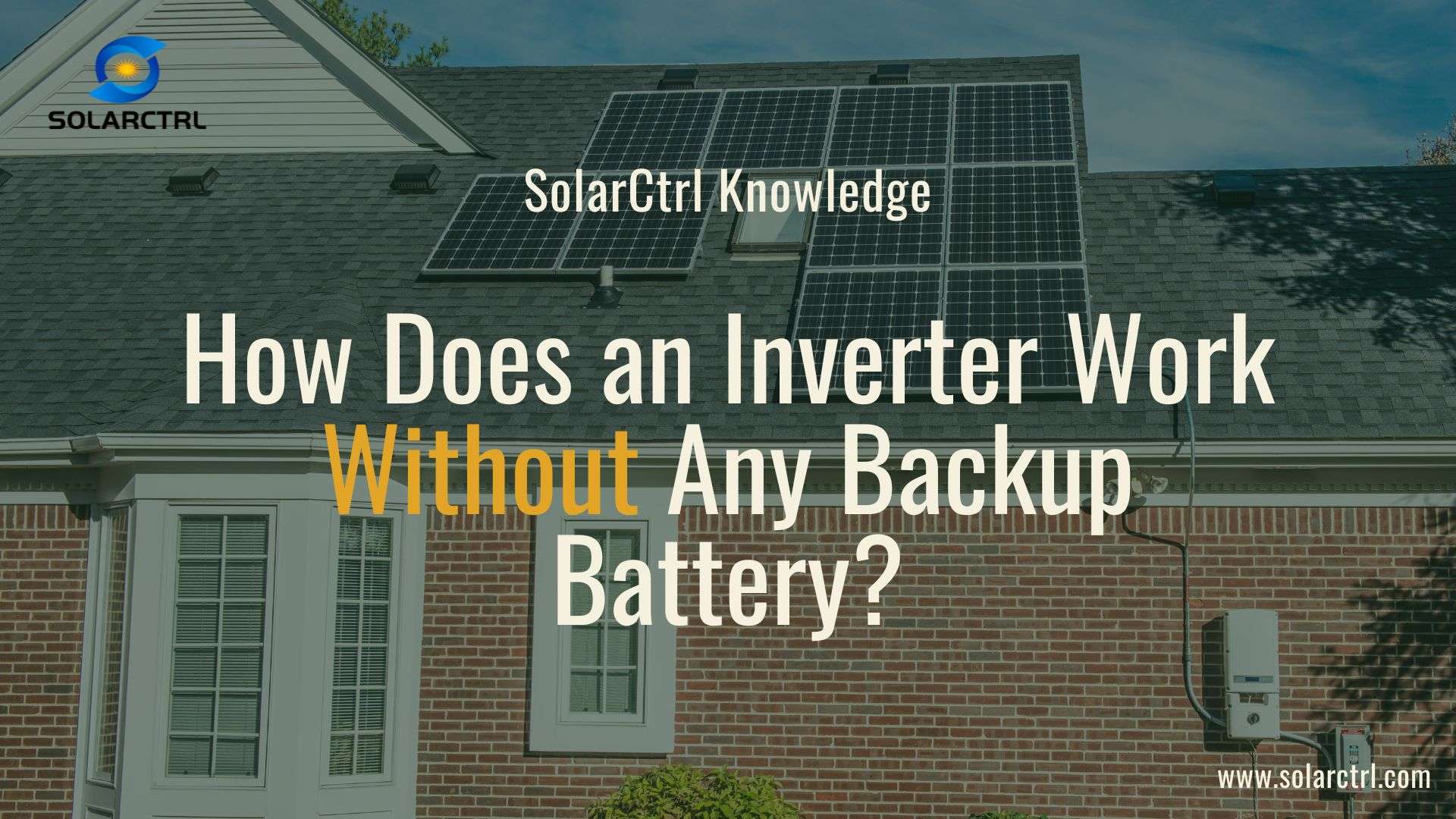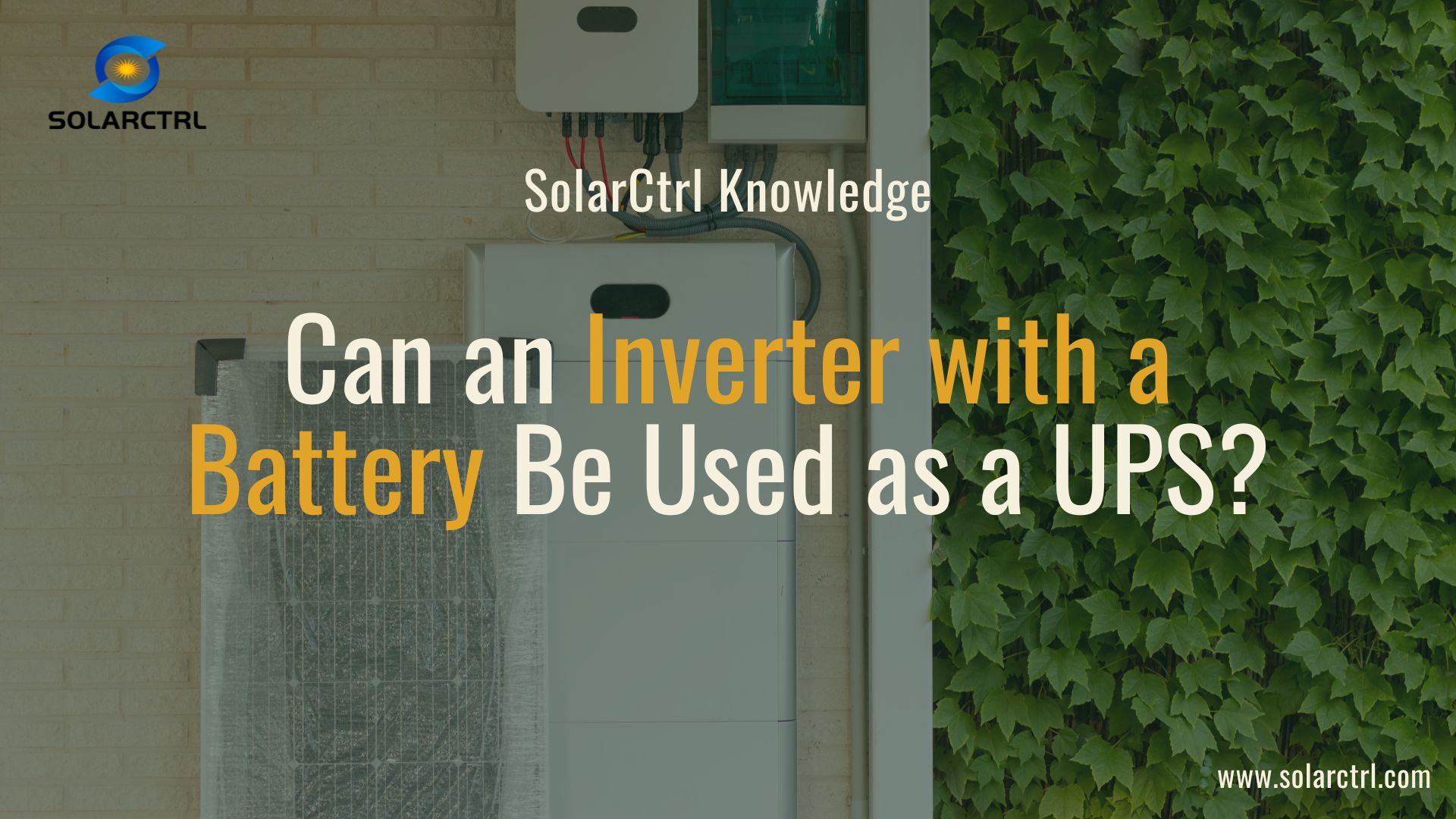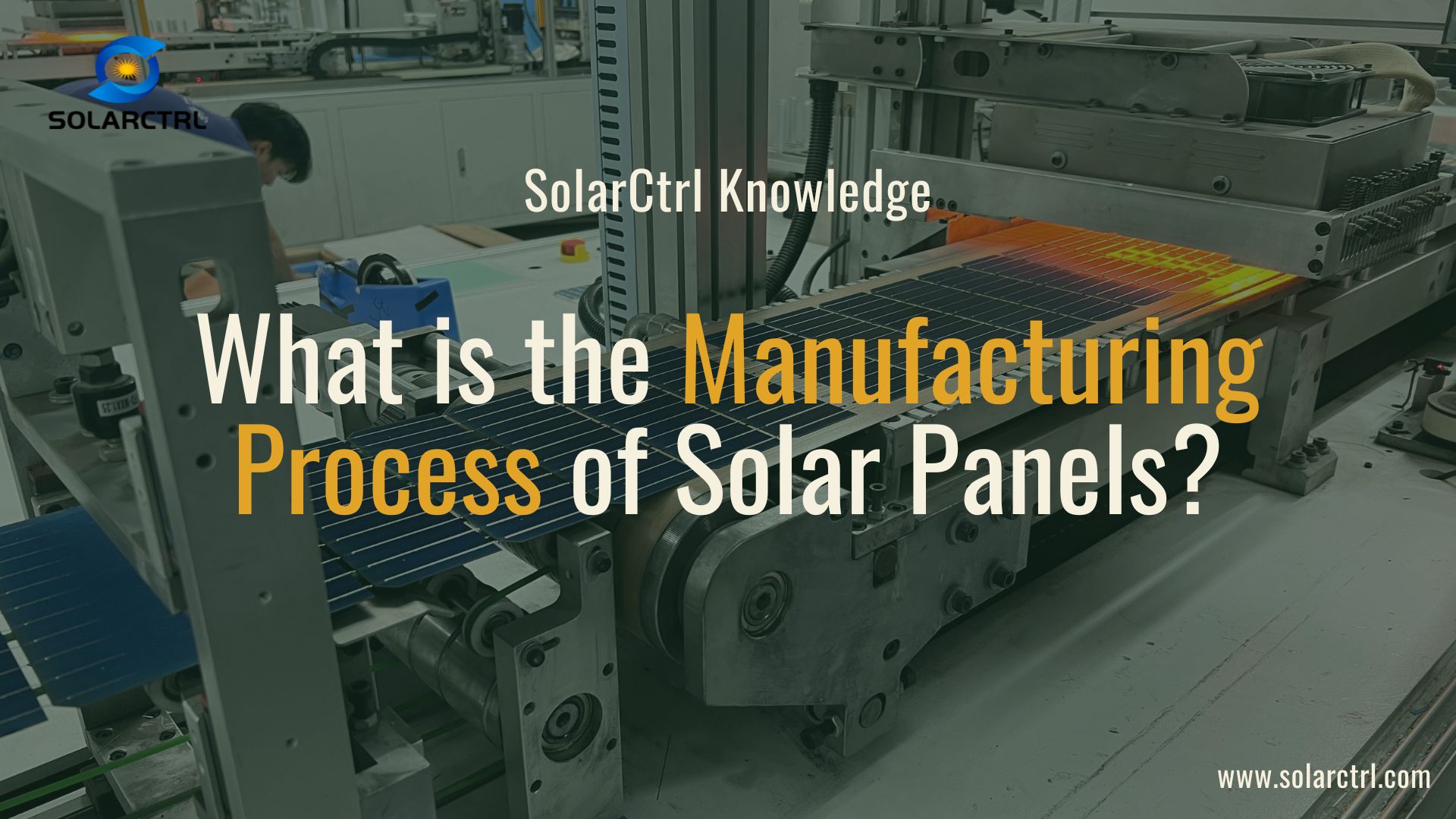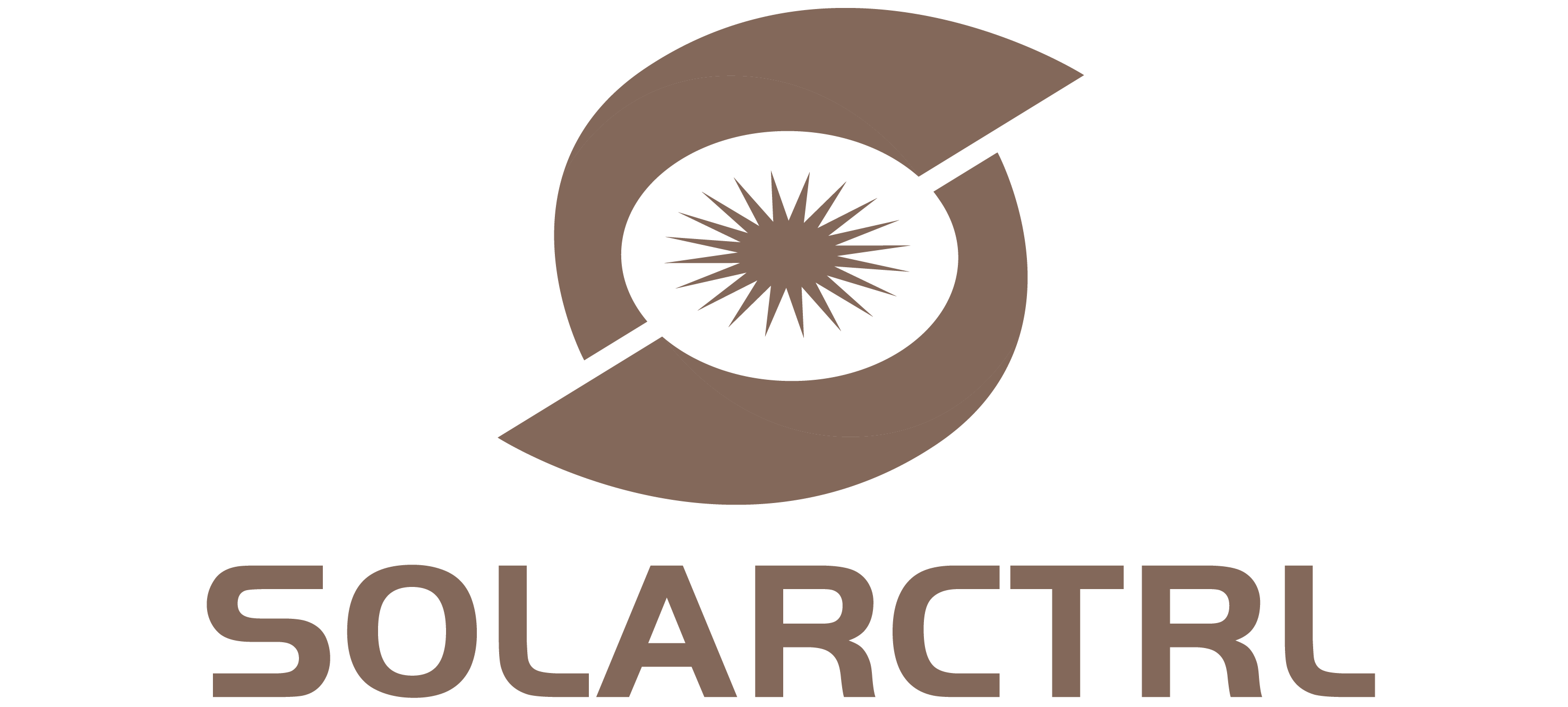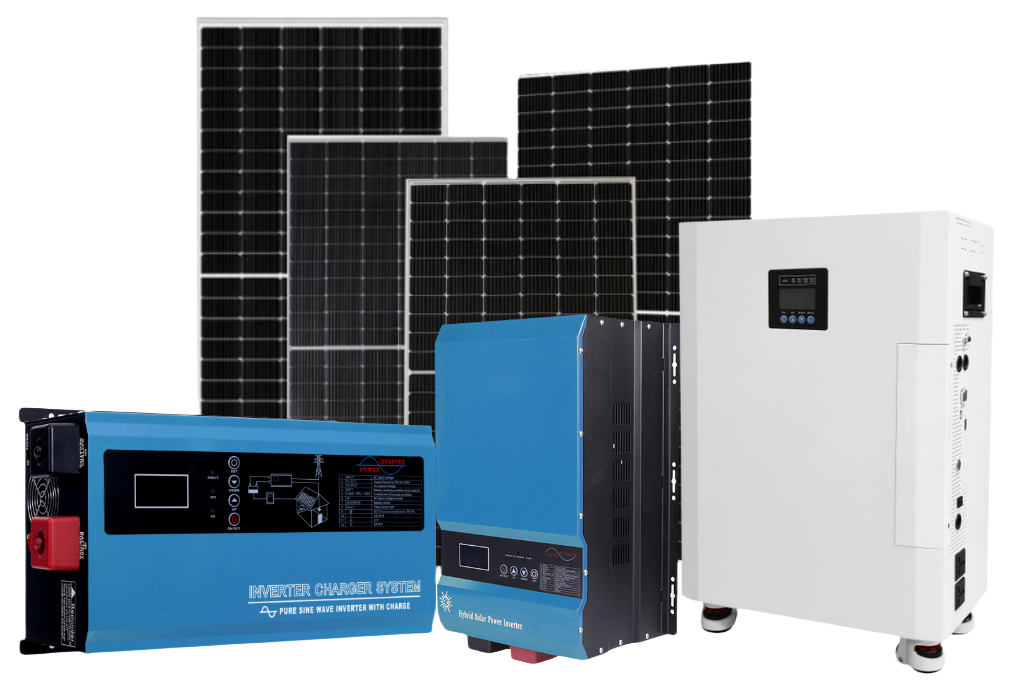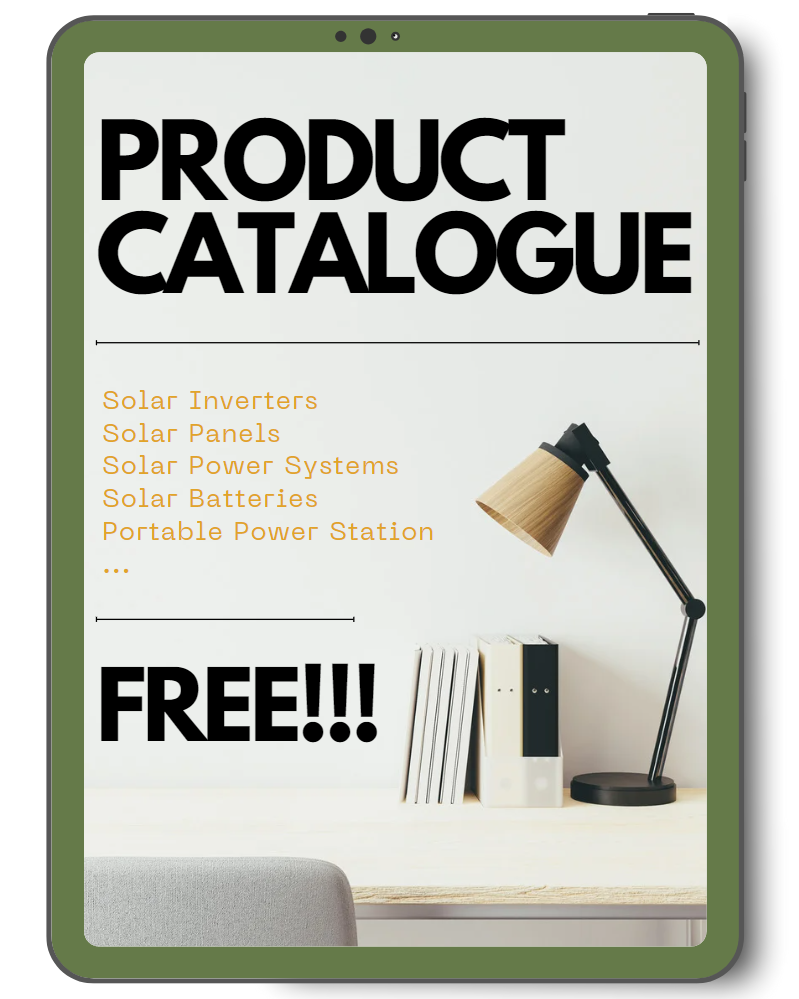MPPT Solar Charge Controller Manufacturer
Certified with CE, IEC, ROHS, ISO9001 certifications, with fast delivery, fexible MOQ and OEM services.
MPPT Solar Charge Controller Manufacturer
Certified with CE, IEC, ROHS, ISO9001 certifications, with fast delivery, fexible MOQ and OEM services.
The Best Choices for MPPT Solar Charge Controller
With automatic voltage identification for 12V/24V, 12V/24V/48V, and 48V/96V systems, SolarCtrl MPPT Controller use the latest MPPT algorithm for maximum solar panel efficiency – tracking up to 99% and converting up to 98%.

The Best Choices for MPPT Solar Charge Controller
With automatic voltage identification for 12V/24V, 12V/24V/48V, and 48V/96V systems, SolarCtrl MPPT Controller use the latest MPPT algorithm for maximum solar panel efficiency – tracking up to 99% and converting up to 98%.

Table Of Contents For This Page
To make sure you can find the information you want quickly,
we have prepared this content directory that will jump to the corresponding location when you click on it.
Table Of Contents For This Page
To make sure you can find the information you want quickly,
we have prepared this content directory that will jump to the corresponding location when you click on it.
General Hot Selling Products
Find the right MPPT Solar Charge Controller for your Business, that have become a benchmark for quality and innovation in the industry.
Application

Main Features
The latest MPPT algorithm automatically tracks the maximum power point of the solar panel, tracking efficiency is up to 99% and the conversion efficiency is up to 98%
DSP chip, digital with up to 12-bit precision guarantees the accuracy of MPPT
PV input voltage range is wide, users can choose different numbers of solar panels according to actual conditions
Under the maximum efficiency of energy collection conditions, fast charging, absorption charging, pulse charging, etc. are maintained to maintain the battery life
Support lead-acid battery, gel battery, lithium battery, and user-defined battery
Can view PV voltage, PV power, battery voltage, charging current, operating temperature, fault code. The controller has overcharge, over discharge, overload, open circuit protection, over temperature protection, short circuit automatic protection.
| System Voltage | Efficiency | PV Input Operating Voltage | Charging Current | Battery Voltage Range | Selectable Battery Type | Over Temperature Alarm |
| 12V 24V 48V 96V | 98% | 14-130VDC (12V SYSTEM) 38-130VDC (24V SYSTEM) 72-160VDC (48V SYSTEM) 144-280VDC (96V SYSTEM) | 30A~150A | 9V-16V (12VDC) 18V-30V (24VDC) 36V-60V (48VDC) 72V-120V (96VDC) | Lead-acid Battery Lithium Battery | 75℃ |
General Hot Selling Products
Find the right MPPT Solar Charge Controller for your Business, that have become a benchmark for quality and innovation in the industry.


Main Features
The latest MPPT algorithm automatically tracks the maximum power point of the solar panel, tracking efficiency is up to 99% and the conversion efficiency is up to 98%
DSP chip, digital with up to 12-bit precision guarantees the accuracy of MPPT
PV input voltage range is wide, users can choose different numbers of solar panels according to actual conditions
Under the maximum efficiency of energy collection conditions, fast charging, absorption charging, pulse charging, etc. are maintained to maintain the battery life
Support lead-acid battery, gel battery, lithium battery, and user-defined battery
Can view PV voltage, PV power, battery voltage, charging current, operating temperature, fault code. The controller has overcharge, over discharge, overload, open circuit protection, over temperature protection, short circuit automatic protection.
Application

About SolarCtrl
SolarCtrl is a MPPT Solar Charge Controller Manufacturer in China.
No matter if you are looking for a wholesale supplier or if you need custom-made MPPT solar charge controller, we can all help.
Send an inquiry to get an instant quote now, Let’s raise your business to the next level !
About SolarCtrl
SolarCtrl is a MPPT Solar Charge Controller Manufacturer in China.
No matter if you are looking for a wholesale supplier or if you need custom-made MPPT solar charge controller, we can all help.
Send an inquiry to get an instant quote now, Let’s raise your business to the next level !
A Brief Self-Nomination, Why Choose SolarCtrl ?
Founded in 2009, SolarCtrl is a professional large-scale manufacturer and supplier in solar energy industry integrating R&D and production together.
Source Directly from SolarCtrl’s Factory Lines—where cutting-edge technology meets cost-effective solutions for your business.
Strong Production Capacity
Experience uninterrupted solutions with our strong production capacity, ensuring timely delivery and consistent quality tailored to your needs.
Top Quality With Affordable Price
Strike the perfect balance between quality and cost. With our high-quality yet cost-effective MPPT, your business gains a competitive edge without breaking the bank.
Customization & OEM Support
Enjoy the freedom to choose from customizable service. Our MPPTs are crafted to meet your specific requirements.
Flexible MOQ and Swift Delivery
Scale your operations seamlessly with our flexible minimum order quantities and quick delivery times.
Industry-Leading Certifications
Our MPPTs come with top industry certifications, offering you and your clients the assurance of safety and quality.
Full Service & Support
From pre-sales consultations to after-sales technical support, we’ve got you covered every step of the way.
A Brief Self-Nomination, Why Choose SolarCtrl ?
Founded in 2009, SolarCtrl is a professional large-scale manufacturer and supplier in solar energy industry integrating R&D and production together.
Source Directly from SolarCtrl’s Factory Lines—where cutting-edge technology meets cost-effective solutions for your business.
Strong Production Capacity
Experience uninterrupted solutions with our strong production capacity, ensuring timely delivery and consistent quality tailored to your needs.
Top Quality With Affordable Price
Strike the perfect balance between quality and cost. With our high-quality yet cost-effective MPPT, your business gains a competitive edge without breaking the bank.
Customization & OEM Support
Enjoy the freedom to choose from customizable service. Our MPPTs are crafted to meet your specific requirements.
Flexible MOQ and Swift Delivery
Scale your operations seamlessly with our flexible minimum order quantities and quick delivery times.
Industry-Leading Certifications
Our MPPTs come with top industry certifications, offering you and your clients the assurance of safety and quality.
Full Service & Support
From pre-sales consultations to after-sales technical support, we’ve got you covered every step of the way.
The Components of a MPPT Solar Charge Controller
The Maximum Power Point Tracking (MPPT) solar charge controller is a DC-to-DC converter for solar power system. It receives voltage from the solar panels and converts it to charge your battery at a more appropriate level.
Understanding the various components of a MPPT Solar Charge Controller is critical for solar energy retailers and installers. This article aims to provide a detailed breakdown of its core components, offering a deep dive into what makes these controllers so efficient.
Voltage Regulator
The Voltage Regulator is the heart of the MPPT charge controller. It ensures that the solar panels are operating at their maximum power point, thereby optimizing energy yield. The regulator adjusts the voltage and current from the solar panels to safely charge the battery.
Microprocessor
The Microprocessor controls all the operations and functionalities within the MPPT charge controller. It continuously monitors the voltage and current from the solar panels and the battery to determine the maximum power point.
Input and Output Terminals
These are the points where the solar panels and batteries are connected to the MPPT charge controller. The Input Terminals receive the raw power from the solar panels, while the Output Terminals deliver the optimized charge to the batteries.


Temperature Sensors
Temperature Sensors play a crucial role in enhancing the life and efficiency of the battery. They measure the temperature and adjust the voltage levels accordingly, preventing overheating and potential damage.
Display and User Interface
Most MPPT controllers come with a built-in display and a user-friendly interface. This allows for real-time monitoring of various metrics such as battery charge status, current power output, and overall system performance.
Conclusion
Each of these components plays a vital role in the optimal performance of an MPPT Solar Charge Controller. Understanding the intricacies of these elements can equip solar energy retailers and installers to make more informed decisions.
At SolarCtrl, we take pride in providing high-quality, technology-certified MPPT Solar Charge Controllers that offer robust features and reliable performance. By choosing SolarCtrl products, retailers and installers are not just investing in a piece of equipment; they’re adding significant value to their businesses and the end users they serve.
The Components of a MPPT Solar Charge Controller
The Maximum Power Point Tracking (MPPT) solar charge controller is a DC-to-DC converter for solar power system. It receives voltage from the solar panels and converts it to charge your battery at a more appropriate level.
Understanding the various components of a MPPT Solar Charge Controller is critical for solar energy retailers and installers. This article aims to provide a detailed breakdown of its core components, offering a deep dive into what makes these controllers so efficient.

Voltage Regulator
The Voltage Regulator is the heart of the MPPT charge controller. It ensures that the solar panels are operating at their maximum power point, thereby optimizing energy yield. The regulator adjusts the voltage and current from the solar panels to safely charge the battery.
Microprocessor
The Microprocessor controls all the operations and functionalities within the MPPT charge controller. It continuously monitors the voltage and current from the solar panels and the battery to determine the maximum power point.
Input and Output Terminals
These are the points where the solar panels and batteries are connected to the MPPT charge controller. The Input Terminals receive the raw power from the solar panels, while the Output Terminals deliver the optimized charge to the batteries.

Temperature Sensors
Temperature Sensors play a crucial role in enhancing the life and efficiency of the battery. They measure the temperature and adjust the voltage levels accordingly, preventing overheating and potential damage.
Display and User Interface
Most MPPT controllers come with a built-in display and a user-friendly interface. This allows for real-time monitoring of various metrics such as battery charge status, current power output, and overall system performance.
Conclusion
Each of these components plays a vital role in the optimal performance of an MPPT Solar Charge Controller. Understanding the intricacies of these elements can equip solar energy retailers and installers to make more informed decisions.
At SolarCtrl, we take pride in providing high-quality, technology-certified MPPT Solar Charge Controllers that offer robust features and reliable performance. By choosing SolarCtrl products, retailers and installers are not just investing in a piece of equipment; they’re adding significant value to their businesses and the end users they serve.
Comparison of MPPT vs PWM Charge Controllers
Are you often confronted with a choice between Maximum Power Point Tracking (MPPT) and Pulse-Width Modulation (PWM) charge controllers? This article aims to provide a concise comparison of these two technologies to facilitate informed decision-making.

Efficiency
MPPT controllers are generally more efficient than PWM controllers. MPPT can extract up to 30% more power from the same solar setup compared to PWM. This efficiency makes MPPT a preferable choice for systems where maximizing energy yield is a priority.
Flexibility and Scalability
MPPT controllers are more versatile when it comes to system expansion and adaptability. They can handle varying voltage inputs and are well-suited for larger, more complex solar installations. In contrast, PWM controllers have limitations in handling different voltages and are generally better for smaller, simpler setups.
Cost
PWM controllers are usually less expensive upfront than MPPT controllers. However, the higher efficiency and flexibility of MPPT controllers often result in a better return on investment over time, particularly for larger systems.
Operational Complexity
MPPT controllers are technologically more advanced, offering features like data logging, remote monitoring, and adjustable settings. PWM controllers are simpler and offer fewer customization options, which might be suitable for less complex systems or for users who prefer a ‘set it and forget it’ approach.

Conclusion
Both MPPT and PWM charge controllers have their merits and drawbacks. The choice between the two will depend on various factors such as system size, efficiency requirements, and budget constraints. Generally, MPPT controllers are more efficient, versatile and advanced than PWM controllers, but PWM controllers are less expensive than MPPT Controllers.
Comparison of MPPT vs PWM Charge Controllers
Are you often confronted with a choice between Maximum Power Point Tracking (MPPT) and Pulse-Width Modulation (PWM) charge controllers? This article aims to provide a concise comparison of these two technologies to facilitate informed decision-making.

Efficiency
MPPT controllers are generally more efficient than PWM controllers. MPPT can extract up to 30% more power from the same solar setup compared to PWM. This efficiency makes MPPT a preferable choice for systems where maximizing energy yield is a priority.
Flexibility and Scalability
MPPT controllers are more versatile when it comes to system expansion and adaptability. They can handle varying voltage inputs and are well-suited for larger, more complex solar installations. In contrast, PWM controllers have limitations in handling different voltages and are generally better for smaller, simpler setups.

Cost
PWM controllers are usually less expensive upfront than MPPT controllers. However, the higher efficiency and flexibility of MPPT controllers often result in a better return on investment over time, particularly for larger systems.
Operational Complexity
MPPT controllers are technologically more advanced, offering features like data logging, remote monitoring, and adjustable settings. PWM controllers are simpler and offer fewer customization options, which might be suitable for less complex systems or for users who prefer a ‘set it and forget it’ approach.
Conclusion
Both MPPT and PWM charge controllers have their merits and drawbacks. The choice between the two will depend on various factors such as system size, efficiency requirements, and budget constraints. Generally, MPPT controllers are more efficient, versatile and advanced than PWM controllers, but PWM controllers are less expensive than MPPT Controllers.
Troubleshooting Common Issues with MPPT Solar Charge Controllers
Even the most reliable MPPT Solar Charge Controllers can experience occasional issues. This article aims to guide you through the process of identifying and resolving some of the most common problems associated with these controllers.

Inconsistent Charging
One of the recurring issues is inconsistent charging, where the charge controller doesn’t maintain a steady charge rate. The primary reasons could be poor connections, corrosion, or even shadow effects on the solar panels. Make sure all connections are secure and clean, and that the solar panels are receiving consistent sunlight.
Overheating
Overheating is another common issue with MPPT charge controllers. This can be attributed to inadequate ventilation or high ambient temperatures. The immediate solution is to turn off the system, let it cool down, and then restart it. Make sure the controller is placed in a well-ventilated area to prevent recurring issues.
Low Battery Voltage
Low battery voltage could be a result of several factors like a depleted battery, an improperly sized battery bank, or even malfunctioning solar panels. Check the battery’s health and consider replacing it if it’s old or damaged. Also, ensure that the battery bank size matches the energy demands.
No Display or Error Messages
In some instances, the controller’s display may go blank or start showing error messages. The cause might be as simple as a loose wire or as complicated as a software issue. Recheck all connections and consider a system reset. If the problem persists, consult the controller’s manual for specific error codes and their meanings.


Incorrect Readings
Sometimes, you may notice that the controller is giving incorrect readings for voltage or current. This can happen due to incorrect system settings or calibration issues. Make sure that the system settings are configured according to the specifications of your solar panels and battery.
Frequent Mode Switching
MPPT controllers are designed to switch modes to optimize charging. However, frequent switching can indicate a problem. This can be caused by unstable input power or a malfunctioning algorithm within the controller. Ensure the solar panels are clean and receiving consistent sunlight, and consider updating the controller’s firmware if available.
Conclusion
While MPPT Solar Charge Controllers are generally robust and reliable, like any technology, they can encounter issues. The ability to troubleshoot these common problems is essential for maintaining operational efficiency and achieving customer satisfaction.
At SolarCtrl, we understand these challenges and are committed to offering comprehensive technical support and training to equip our clients with the tools they need. By partnering with SolarCtrl, retailers and installers can navigate these issues more effectively, thereby building customer trust and enhancing the reliability of the solar energy systems they install.
Troubleshooting Common Issues with MPPT Solar Charge Controllers
Even the most reliable MPPT Solar Charge Controllers can experience occasional issues. This article aims to guide you through the process of identifying and resolving some of the most common problems associated with these controllers.

Inconsistent Charging
One of the recurring issues is inconsistent charging, where the charge controller doesn’t maintain a steady charge rate. The primary reasons could be poor connections, corrosion, or even shadow effects on the solar panels. Make sure all connections are secure and clean, and that the solar panels are receiving consistent sunlight.
Overheating
Overheating is another common issue with MPPT charge controllers. This can be attributed to inadequate ventilation or high ambient temperatures. The immediate solution is to turn off the system, let it cool down, and then restart it. Make sure the controller is placed in a well-ventilated area to prevent recurring issues.

Low Battery Voltage
Low battery voltage could be a result of several factors like a depleted battery, an improperly sized battery bank, or even malfunctioning solar panels. Check the battery’s health and consider replacing it if it’s old or damaged. Also, ensure that the battery bank size matches the energy demands.
No Display or Error Messages
In some instances, the controller’s display may go blank or start showing error messages. The cause might be as simple as a loose wire or as complicated as a software issue. Recheck all connections and consider a system reset. If the problem persists, consult the controller’s manual for specific error codes and their meanings.

Incorrect Readings
Sometimes, you may notice that the controller is giving incorrect readings for voltage or current. This can happen due to incorrect system settings or calibration issues. Make sure that the system settings are configured according to the specifications of your solar panels and battery.
Frequent Mode Switching
MPPT controllers are designed to switch modes to optimize charging. However, frequent switching can indicate a problem. This can be caused by unstable input power or a malfunctioning algorithm within the controller. Ensure the solar panels are clean and receiving consistent sunlight, and consider updating the controller’s firmware if available.
Conclusion
While MPPT Solar Charge Controllers are generally robust and reliable, like any technology, they can encounter issues. The ability to troubleshoot these common problems is essential for maintaining operational efficiency and achieving customer satisfaction.
At SolarCtrl, we understand these challenges and are committed to offering comprehensive technical support and training to equip our clients with the tools they need. By partnering with SolarCtrl, retailers and installers can navigate these issues more effectively, thereby building customer trust and enhancing the reliability of the solar energy systems they install.
Considerations When Choosing a MPPT Solar Charge Controller Supplier
For solar energy retailers and installers, choosing the right supplier for MPPT Solar Charge Controllers is a critical decision that impacts not only the performance of the solar systems but also the long-term satisfaction of their customers. This article outlines some key considerations that can guide businesses in making an informed choice.
Quality Assurance
Technical Support
Delivery Time and Logistics
Customization Options
Industry Reputation
Conclusion
Choosing the right supplier for MPPT Solar Charge Controllers is a multi-faceted decision, involving multiple considerations such as product quality, technical support, and logistics.
By partnering with SolarCtrl, you’re not just choosing a supplier; you’re aligning with a team committed to meeting these criteria. We offer technology-certified products and reliable after-sales service, designed to meet your business needs while upholding high standards of quality and customer satisfaction.
Do not hesitate, contact us now, let’s raise your business to the next level!
Considerations When Choosing a MPPT Solar Charge Controller Supplier
For solar energy retailers and installers, choosing the right supplier for MPPT Solar Charge Controllers is a critical decision that impacts not only the performance of the solar systems but also the long-term satisfaction of their customers. This article outlines some key considerations that can guide businesses in making an informed choice.
Quality Assurance
Technical Support
Delivery Time and Logistics
Customization Options
Industry Reputation
Conclusion
Choosing the right supplier for MPPT Solar Charge Controllers is a multi-faceted decision, involving multiple considerations such as product quality, technical support, and logistics.
By partnering with SolarCtrl, you’re not just choosing a supplier; you’re aligning with a team committed to meeting these criteria. We offer technology-certified products and reliable after-sales service, designed to meet your business needs while upholding high standards of quality and customer satisfaction.
Do not hesitate, contact us now, let’s raise your business to the next level!
Commonly Asked Questions
Yes, we provide samples and charge for the samples with freight cost. The sample fees will be returned if the order quantity over 200pcs.
We have streamlined our production processes to ensure that most of our products are readily available in stock. This means that you can purchase samples and have them shipped at any time and without delay.
Technical support hotline or email for customers to contact in case of technical issues with our products.
Onsite technical support to assist with the installation and maintenance of the products.
Online resources such as manuals, troubleshooting guides, and FAQs to help customers resolve common issues with the products.
Warranty or guarantee period to ensure that customers are covered in case of product defects or malfunctions.
Repair and replacement services for damaged or faulty products.
To provide local technical support, we offer a range of services to VIP distributors, including installation, usage guidance, maintenance, and other related support, free of charge. For larger projects with a capacity of over 55KW, if on-site technical support is required, the cost of airfare, lodging, and meals must be covered by the distributor.
Our technical support services include system design, installation, commissioning, repair, and maintenance. We aim to provide prompt and effective technical support to ensure the smooth operation of your equipment and systems.
To optimize our technical support services, we continuously update our knowledge and skills, and we invest in the latest tools and technologies to enhance our capabilities. In addition, we strive to maintain open communication channels with our clients to ensure that their needs and concerns are addressed promptly and effectively.
Machine appearance customization: Customers can choose the style and color of the machine according to their preferences.
Logo customization: Customers can have their own logo printed on the machine to increase brand recognition.
Label customization: Customers can customize the labels on the machine to include specific information or warnings.
LCD display customization: Customers can customize the information displayed on the LCD screen to meet their specific needs.
Packaging customization: Customers can customize the packaging of the machine to suit their requirements, including the design and materials used.
For orders of less than 10 units, we generally ship within two days. For orders between 10 and 100 units, we aim to ship within one week. To ensure the quality of our products, we keep sufficient inventory and perform a final round of testing before packaging and shipping.
Please note that the delivery time may vary depending on factors such as the destination, shipping method, and customs clearance processes. We work with reliable shipping partners to ensure timely delivery and provide tracking information for all shipments.
We usually ship by DHL, UPS, FedEx, or TNT. Bulk orders can be shipped by airline or sea shipping as well. It is important to note that the choice of shipping method may depend on factors such as the size and weight of the shipment, the destination, and the urgency of the delivery.
We offer several payment methods for your convenience, including T/T, L/C, Western Union, PayPal, and cash. Please choose the payment method that works best for you.
Commonly Asked Questions
Yes, we provide samples and charge for the samples with freight cost. The sample fees will be returned if the order quantity over 200pcs.
We have streamlined our production processes to ensure that most of our products are readily available in stock. This means that you can purchase samples and have them shipped at any time and without delay.
Technical support hotline or email for customers to contact in case of technical issues with our products.
Onsite technical support to assist with the installation and maintenance of the products.
Online resources such as manuals, troubleshooting guides, and FAQs to help customers resolve common issues with the products.
Warranty or guarantee period to ensure that customers are covered in case of product defects or malfunctions.
Repair and replacement services for damaged or faulty products.
To provide local technical support, we offer a range of services to VIP distributors, including installation, usage guidance, maintenance, and other related support, free of charge. For larger projects with a capacity of over 55KW, if on-site technical support is required, the cost of airfare, lodging, and meals must be covered by the distributor.
Our technical support services include system design, installation, commissioning, repair, and maintenance. We aim to provide prompt and effective technical support to ensure the smooth operation of your equipment and systems.
To optimize our technical support services, we continuously update our knowledge and skills, and we invest in the latest tools and technologies to enhance our capabilities. In addition, we strive to maintain open communication channels with our clients to ensure that their needs and concerns are addressed promptly and effectively.
Machine appearance customization: Customers can choose the style and color of the machine according to their preferences.
Logo customization: Customers can have their own logo printed on the machine to increase brand recognition.
Label customization: Customers can customize the labels on the machine to include specific information or warnings.
LCD display customization: Customers can customize the information displayed on the LCD screen to meet their specific needs.
Packaging customization: Customers can customize the packaging of the machine to suit their requirements, including the design and materials used.
For orders of less than 10 units, we generally ship within two days. For orders between 10 and 100 units, we aim to ship within one week. To ensure the quality of our products, we keep sufficient inventory and perform a final round of testing before packaging and shipping.
Please note that the delivery time may vary depending on factors such as the destination, shipping method, and customs clearance processes. We work with reliable shipping partners to ensure timely delivery and provide tracking information for all shipments.
We usually ship by DHL, UPS, FedEx, or TNT. Bulk orders can be shipped by airline or sea shipping as well. It is important to note that the choice of shipping method may depend on factors such as the size and weight of the shipment, the destination, and the urgency of the delivery.
We offer several payment methods for your convenience, including T/T, L/C, Western Union, PayPal, and cash. Please choose the payment method that works best for you.
Your Trusted Source For
Let's raise your business to the next level, NOW! →
Start with following 4 steps:
1
Tell Us What You Need
Tell us as specific as possible of your needs, let us fully understand what you want.
2
Get Solution & Quote
We will work on the best solution according to your requirements, the specific quote will be provided within 24 hours.
3
Approve for Sample Order
Upon receiving your sample order and deposit, we will arrange for sample testing and shipment.
4
Approve for Mass Production
We will start mass production and handle the shipment after getting your approval and deposit.

Get A Free Quote!
- We will contact you within 24 hours
*All your information will be kept strictly confidential and our business staff will ensure that your private information is absolutely safe!
Your Trusted Source For
Let's raise your business to the next level, NOW! →
Start with following 4 steps:
1
Tell Us What You Need
Tell us as specific as possible of your needs, let us fully understand what you want.
2
Get Solution & Quote
We will work on the best solution according to your requirements, the specific quote will be provided within 24 hours.
3
Approve for Sample Order
Upon receiving your sample order and deposit, we will arrange for sample testing and shipment.
4
Approve for Mass Production
We will start mass production and handle the shipment after getting your approval and deposit.
Get A Free Quote!
- We will contact you within 24 hours
*All your information will be kept strictly confidential and our business staff will ensure that your private information is absolutely safe!
More Related Solar Products

High Frequency Inverter
SolarCtrl High Frequency Inverter offers a wide PV input voltage range, making it adaptable to various solar setups. Designed to thrive even in challenging environments with an anti-dusk kit.
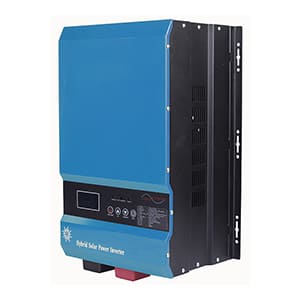
Low Frequency Inverter
With a versatile pure sine wave output ranging from 1kW to 12kW, SolarCtrl Low Frequency Inverter can adapt to various power needs, and handle 3 times peak power effortlessly with its robust load capacity, which is perfect for inductive loads like motors, pumps, and air conditioners.

Solar Pump Inverter
SolarCtrl Solar Pump Inverter is efficient which get 5%-10% higher than orther inverter which need programming. 30% more water output with advanced inverter control algorithm and Maximum PowerPoint tracking efficiency reach 99% with advanced MPPT algorithm.
More Related Solar Products

High Frequency Inverter
SolarCtrl High Frequency Inverter offers a wide PV input voltage range, making it adaptable to various solar setups. Designed to thrive even in challenging environments with an anti-dusk kit.

Low Frequency Inverter
With a versatile pure sine wave output ranging from 1kW to 12kW, SolarCtrl Low Frequency Inverter can adapt to various power needs, and handle 3 times peak power effortlessly with its robust load capacity, which is perfect for inductive loads like motors, pumps, and air conditioners.

Solar Pump Inverter
SolarCtrl Solar Pump Inverter is efficient which get 5%-10% higher than orther inverter which need programming. 30% more water output with advanced inverter control algorithm and Maximum PowerPoint tracking efficiency reach 99% with advanced MPPT algorithm.
More Related Solar Energy Professional Articles
What’s the Typical Lifetime of Solar Panels?
When you invest in solar panels, you’re setting up for decades of renewable energy. But exactly how long can you expect your solar panels to function efficiently? This is crucial as it impacts the return on investment and your overall energy strategy.
How Does an Inverter Work Without Any Backup Battery?
Inverters play a crucial role in solar power systems, converting direct current (DC) generated by solar panels into alternating current (AC) used by most household and industrial appliances. Many solar power systems incorporate backup batteries to store excess energy for use during non-sunny periods or power outages, but how do these inverters function without any backup batteries?
Can an Inverter with a Battery Be Used as a UPS?
Have you ever wondered if an inverter with a battery can function just like a UPS to keep your devices running during a power outage? While both devices provide crucial backup power, their designs and capabilities are not the same, raising questions about their interchangeability.
What is the Manufacturing Process of Solar Panels?
Are you curious about how sunlight is transformed into electricity? How do seemingly ordinary panels capture solar energy and convert it to power everything from homes to businesses? Understanding this process is crucial for advancing sustainable energy solutions.
More Related Solar Energy Professional Articles

What’s the Typical Lifetime of Solar Panels?
When you invest in solar panels, you’re setting up for decades of renewable energy. But exactly how long can you expect your solar panels to function efficiently? This is crucial as it impacts the return on investment and your overall energy strategy.
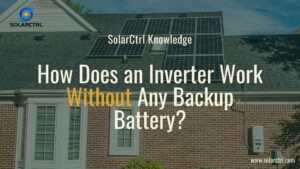
How Does an Inverter Work Without Any Backup Battery?
Inverters play a crucial role in solar power systems, converting direct current (DC) generated by solar panels into alternating current (AC) used by most household and industrial appliances. Many solar power systems incorporate backup batteries to store excess energy for use during non-sunny periods or power outages, but how do these inverters function without any backup batteries?
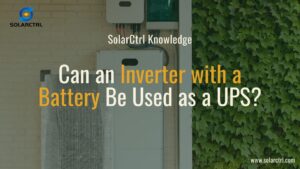
Can an Inverter with a Battery Be Used as a UPS?
Have you ever wondered if an inverter with a battery can function just like a UPS to keep your devices running during a power outage? While both devices provide crucial backup power, their designs and capabilities are not the same, raising questions about their interchangeability.
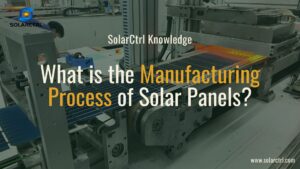
What is the Manufacturing Process of Solar Panels?
Are you curious about how sunlight is transformed into electricity? How do seemingly ordinary panels capture solar energy and convert it to power everything from homes to businesses? Understanding this process is crucial for advancing sustainable energy solutions.
Solar Energy Specialist
We are experts in solar energy industry. If you think you have a problem with it call us for a free, no-obligation, quote.
